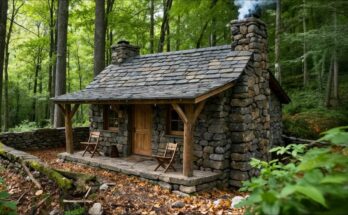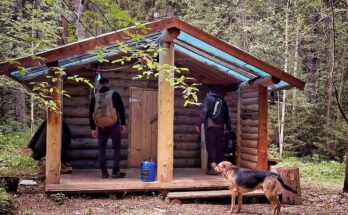As the first frost creeps across the forest floor and the trees shed their final golden leaves, the quiet warning arrives—winter is coming. For those living alone in a log cabin deep in the wilderness, this season marks both challenge and reward. Life in isolation demands preparation, resilience, and a deep respect for nature’s rhythm.
Before the snow falls, every day is a race against time. Firewood must be split and stacked high, enough to last through months of freezing nights. The woodpile becomes the heartbeat of survival—each log representing warmth, security, and comfort. The cabin, built by hand from rough-hewn logs, stands as both home and fortress. Its thick timber walls and moss-chinked seams hold in the heat, while the sturdy roof must bear the weight of snowdrifts yet to come.
Inside, the crackling wood stove becomes the soul of the cabin. Its glow fills the small room with light and life, chasing away the bitter cold outside. Meals are cooked over open flame—simple stews, baked bread, and tea brewed from pine needles. Each task, from melting snow for water to mending worn clothes, reminds one of the balance between hardship and peace that defines wilderness living.
As winter settles in, solitude grows deeper. The world outside turns white and silent, broken only by the howl of distant wolves or the creak of ice-laden trees. Yet, there is a profound beauty in this solitude. The wilderness, though harsh, becomes a companion—its stillness offering clarity and strength.
Living alone in a log cabin during winter is not merely about enduring the cold; it’s about embracing simplicity, finding warmth in self-reliance, and rediscovering the quiet power of being truly alive in nature’s embrace.


